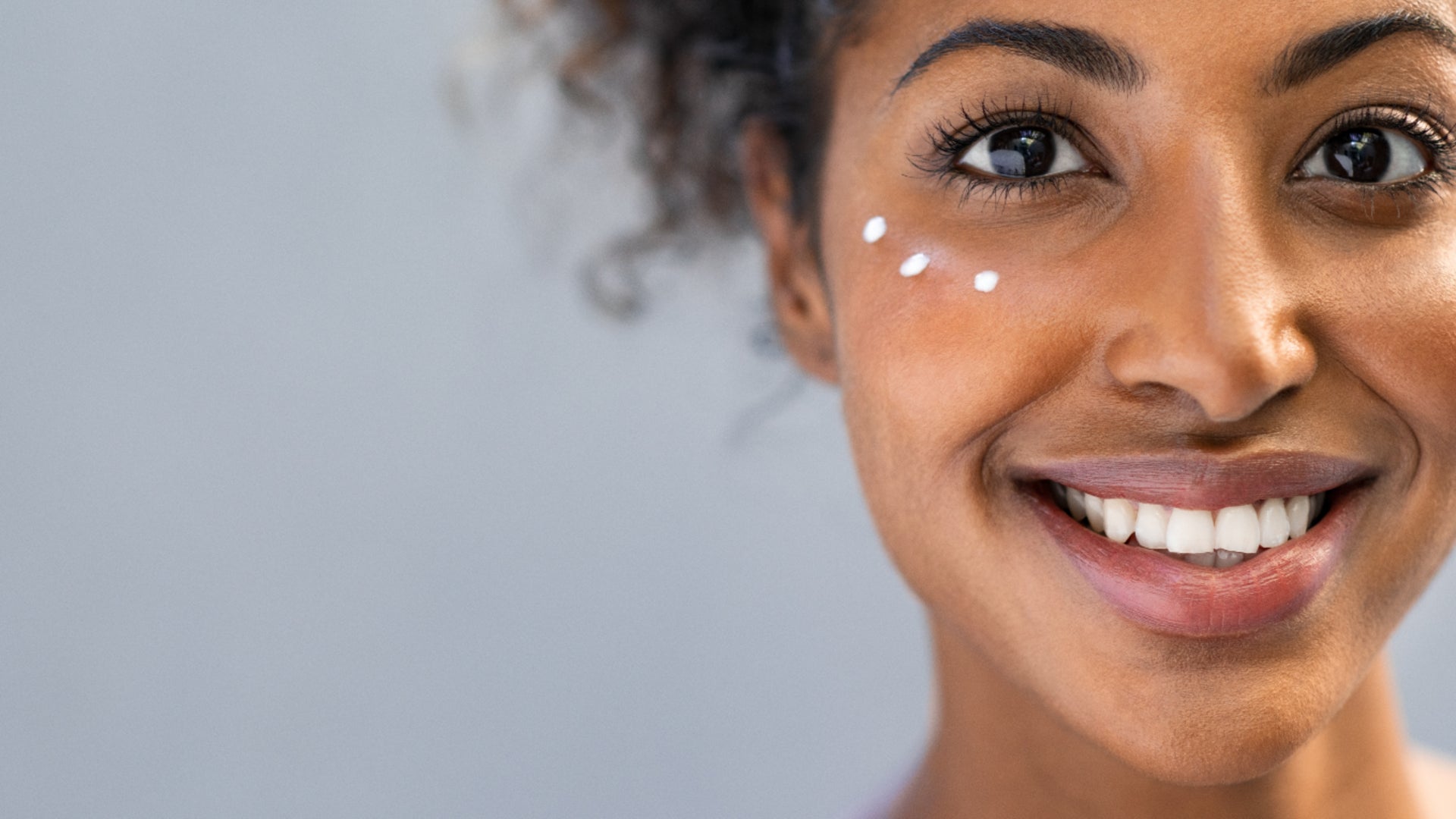
Time To Give The Skin Around Your Eyes Some TLC
If you’ve often wondered how to properly care for the skin around your eyes, the answer is ‘gently’ and ‘with care.’ Read on for seven of the most effective ways to look after this thin, fragile skin.
You may hate your crow’s feet, frown lines and dry skin around your eyes but the skin in this super expressive area is like flipping through a storybook of your life. Every laugh, frown, squint and sleepless night over the years leaves something behind. You’ve gotta love that. It’s proof of a life well lived. And one must never take that for granted.
Sure, the skin around your eyes ages faster than the rest of your face but there are reasons for this. Not only is it thinner, but the skin in this area contains fewer sebaceous glands and less underlying fat and collagen which makes it prone to dryness, dehydration, fine lines, dark circles and puffiness. Add to this the facts that you blink around 10,000 times a day; make countless facial expressions; rub your eyes constantly AND subject this area to environmental exposure on the daily and, well, frankly, it’s a wonder the skin around your eyes fairs as well as it does.
So, how do you make sure you’re doing everything you can to ensure this vulnerable skin gets the love and care it deserves? Simple. You follow these important rules. To. The. Letter.
1. Know That Sleep Is Everything
Around 30-40 percent of us get less than seven hours of sleep a night. And that’s way short of the recommended sweet spot – which is somewhere between seven and nine hours.
Sleep is extremely important for the health of your skin because this is the time when skin regenerates, repairing environmental damage before it hits hard and strengthening itself in preparation for another day.
Studies show that if you miss out on your important shut-eye, the skin around your eyes, in particular, suffers big time, showing signs of redness, swelling, dark circles, dryness and even hanging eyelids. According to sleep.com sleep deprivation is one of the most common causes of dark circles under the eyes because it causes tiny blood vessels under the eyes to dilate, creating a darkish tone to the skin.
Want to help the skin around your eyes avoid all that? Then get yourself to bed at a decent hour in order to enjoy your fill of a good quality seven hours of sleep. Oh, and treat your skin to a nourishing eye treatment to give the skin some overnight love. Try Hyaluronic Acid Eye Cream.
2. Be Careful When You Cleanse
Whacking on your face wash, rubbing it all over your skin and smooshing it around your face, neck and eyes may seem like a good way to ‘wake up’ your skin and get a good, thorough cleanse, but it can cause dragging. And this kind of heavy-handed approach is bad enough for the rest of your face, but the thin, fragile skin around your eyes? Disaster. Apply your cleanser gently and yes, massage it into the skin with circular motions, but use only the pads of your fingers when it comes to your eyes and go extremely lightly.
3. Don’t Overload Your Eyes With Regular Moisturizer
Reckon eye creams are all stuff and nonsense, and moisturizer is just fine for the skin around your eyes? For some people this can be true, but mostly, regular moisturizer will be too heavy or potent for this area, overloading it and causing puffiness exactly where you don’t want it.
A targeted eye cream is so much better. C'mon now, the clue is right there in the name.
Also, eye creams contain ingredients intentionally crafted to deal with specific eye concerns like dark circles, puffiness, sagging, lines and loss of volume. Moisturizers can't promise all that, they have other jobs to do.
4. Invest In An Effective Eye Treatment
Speaking of eye creams, think about what you’d specifically like to target, then look around and find one that suits your needs.
Our Peptide Eye Gel, for example is extremely lightweight and awesome for waking up the eye area as its gel formula sinks in almost instantly. Top tip: we don’t subscribe to keeping skincare in the refrigerator as a rule, but this one works perfectly when chilled. It also combines a special peptide complex with licorice extract to hydrate, nourish and support collagen and elastin production.
If you’re looking for something to help reduce the visible signs of skin aging, we highly recommend Depuffing Longevity Eye Cream which not only gets to work on puffiness but also contains lingonberry stem cells and green coffee bean to brighten dark circles.
5. Learn How & When To Apply Your Eye Cream
When it comes to the order of your skincare routine, cleanser obviously comes first, but then what? Well, the general rule of thumb is to start with the thinnest in texture and finish with the thickest. Taking that into account, after cleansing comes toner which is thin and watery, then serum which is silky and kind of slippery. Your thicker, heavier formulas like moisturizer and sunscreen come last. And your eye product? This slots in the middle, between serum and moisturizer.
When applying your eye cream, use just a very small amount – too much will overload your skin – and tap it lightly around the orbital bone using the pad of your ring finger. Using your ring finger ensures a delicate touch. That's crucial.
6. Pair Down Heavy Eye Makeup
It makes sense that the more makeup you apply to your eyes, the more effort is required to remove it. And harsh rubbing damages the delicate skin in this area, significantly accelerating the visible signs of aging.
We don’t want that for you so try to either cut down on the amount of makeup you wear regularly, or if you can’t do without your daily fix of mascara, use a gentle eye makeup remover that’s formulated for sensitive skin. Apply it to a cotton pad and hold it over your closed eye for 30 seconds before gently wiping in an outward direction. This helps to break down the makeup and cuts down on the amount of rubbing required.
7. Wear Sunglasses Every Day
Who said you should only where your shades on super bright days? Sunglasses reduce squinting, plus they help protect the skin around your eyes from the perils of UV radiation. And just because the sky’s not blue and the temperature’s not up in the 90s, the sun is still there. So, we say wear your shades as often as you can.
Your eyes will thank you for it.





